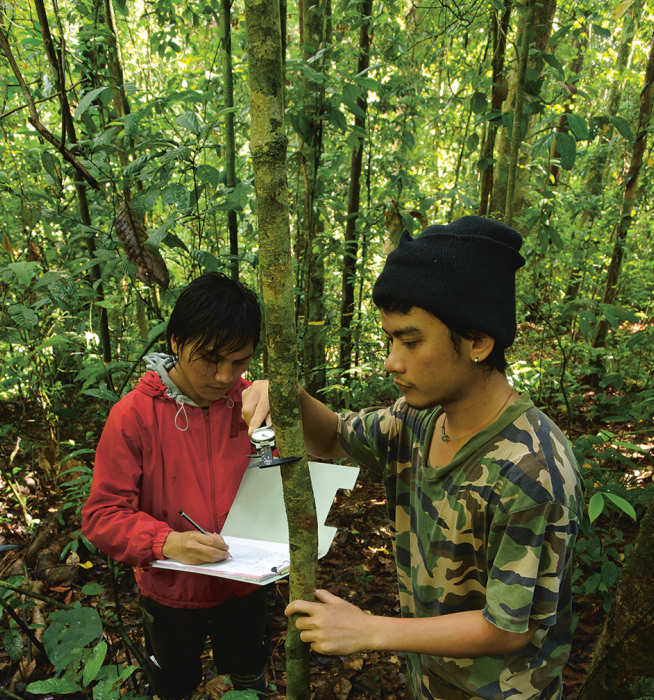Professor Robert Ewers is on a mission to save the planet and change human behaviour – one rainforest at a time.
Words: Lucy Jolin / Photography: Chi’en C. Lee
Deep in the rainforest state of Sabah, Malaysian Borneo, an area of forest is being cleared to make way for a palm oil plantation. But what makes this deforestation different is that scientists are on site, recording exactly how the clearance affects the plants and animals that make the forest their home – everything from the stress that habitat change causes bats to the discovery of a rare pheasant.
This is the Stability of Altered Forest Ecosystems (SAFE) project, one of the world’s largest ecological experiments. It’s managed by the South East Asia Rainforest Research Partnership (SEARRP) in close collaboration with Imperial College London, and is the brainchild of Professor Robert Ewers of the Department of Life Sciences.
The only way to understand how we can correctly manage forest clearance, he says, is to study its processes. “We need to know what the forest was like before the impact, so you can compare directly,” he explains. “Before the project started, I had to find a place where a change was about to happen, so that we could get there and monitor that forest before, during and after the change.”
If you don’t want climate change on your doorstep, don’t stuff up the tropics and the forests"
Tropical forests make up a relatively small area of the Earth: about 10 per cent of the world’s terrestrial surface. But their impact is huge: they support roughly 1.5 billion livelihoods; they are one of the biggest terrestrial carbon sinks, in that they pull carbon out of the atmosphere and store around 50 per cent of the world’s above-ground carbon; and around 50 per cent of all terrestrial species – vertebrates, invertebrates and plants – is supported by forests.
Humans impact forests in two main ways, says Ewers. “One is clearing the forests, typically to make space for agriculture. That’s about as extreme an impact as you can get. The other mostly falls under the broad category of resource extraction – logging, bushmeat hunting for food, fishing and harvesting all those non-timber products – usually for food, but sometimes for medicine as well.”
And what happens to those forests in Borneo or Brazil will resonate across the globe. “Climate is a big global equaliser,” says Ewers. “In a nutshell: if you don’t want climate change on your doorstep, don’t stuff up the tropics and the forests. Tropical deforestation accounts for around 15 per cent of global carbon emissions. If you can stop that, you can have a noticeable effect on the rate of climate change.”
It’s hoped that the SAFE project in Borneo will play a part in that process. It’s now been going for seven years and the forest is almost cleared. The next stage of the research will be taking the empirical observations and using that data to try and predict how the entire ecosystem might be affected.

“The world already has tree models, biodiversity models and carbon models, but stitching all those things together at a single site hasn’t been taken on yet,” says Ewers.
“The aim is to find better ways of doing agricultural expansion and designing the land that’s left behind. For example, perhaps we can find ways where we can sacrifice, say, 10 per cent of the agricultural value but in return gain 30 per cent extra biodiversity value, just by leaving one or two pieces of forest behind.”
But, he emphasises, the project isn’t about banning humans from forests. Rather, it’s aiming to find ways in which agricultural expansion can take place while minimising environmental cost. People need money, he points out, and agriculture is a perfectly valid way of doing that. “Palm oil plantations, for example, employ around half a million low-skilled people in Malaysia alone. It’s hard to imagine what they would be doing for a living without large-scale agriculture. We have to recognise that reality and learn how we can have agricultural expansion, but do it while minimising the environmental cost.”